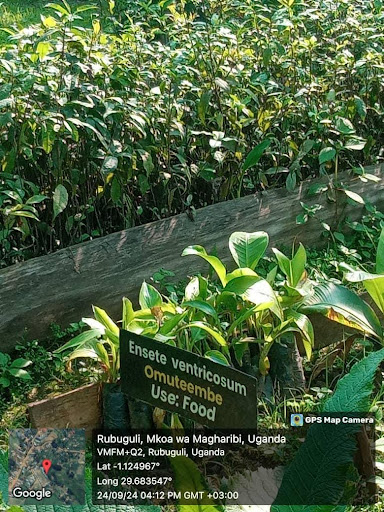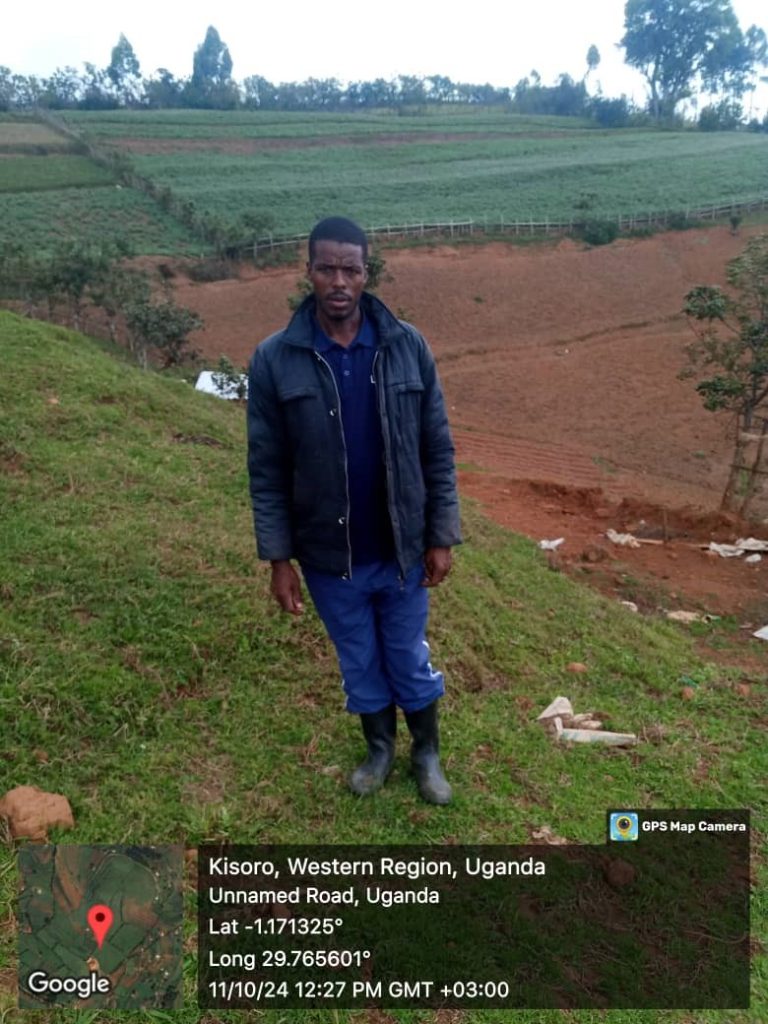

The Centre for Research Uptake in Africa (CRU-Africa) is working in collaboration with
Completion of the Trees nursery bed and preparations for planting;
There has been regular mobilization of the members within the local community under the Nyanamo Community Conservation Development Organization (NCCDO), to ensure that the established nursery beds at Nyanamo Town Council (TC) and Rubuguri TC are protected from unwanted access, are cleaned up regularly and kept the required standard, which standard they were educated of. In July 2024, the activity of potting and soil mixing was conducted with two aims; i) to train the local community (LC) about this technical work, but also ii) to prepare for planting of more tree seedlings in the two established nursery beds.

Tree planting and maintenance:
A) In the month of July 2024, we heavily engaged the Batwa and non-Batwa community members, giving them refresher skills transfer on the collection of wildings and seedlings propagation. Having obtained the required authorization from the relevant authorities, we released the trainees to embark on the exercise of traversing the safest grounds of Bwindi impenetrable forest and National Park to collect wildlings. This exercise lasted 2 weeks and yielded 471 wildlings that were screened by our technical team and incubated into the Nyanamo nursery bed. 544 wildlings were collected, screened by our technical team and incubated into the Rubuguri nursery bed.
B) In the first 2 weeks of the month of August 2024, we embarked on another technical exercise of tree propagation. We sent a technical team in the field to train Batwa and non-Batwa community members on i) the benefits of tree propagation, ii) how trees are propagated, and iii) the standard nursery care for a propagated tree. We proceeded to propagate 2,200 trees which we planted in the Nyanamo nursery bed for nurturing. We propagated another 2,400 trees in the Rubuguri nursery bed for continued nurturing.
C) In the last 2 weeks of the month of August we conducted the routine periodic spot weeding of the Kobusina pocket forest and pruning of the trees (The conservation of Kobusina pocket forest was a move to maintain the ecological functions of nature and support communities to meet their subsistence needs The pocket forest acts as a buffer to Bwindi Impenetrable National Park). We support the community members to conduct periodic maintenance exercises on this resource.
D) When the September rains arrived the Batwa and non-Batwa community members were mobilized through the NCCDO community initiative and we planted 400 trees on 1.5 acres of community land in Rushekye village in Nyanamo TC.
Environmental restoration activities
A prolonged dry season hit the Bwindi region as it did the whole of the Western Uganda region, lasted 4 months (June-September 2024). This led us to re-plan our tree planting sites resorting to picking interest in sites near the bank of River Ruhezanyenda in order to allow continued planting through the dry seasons and eliminating additional costs of irrigation.
We leveraged on the existing local government (LG) campaign that had been on-going where government was supporting and encouraging the river bank dwellers to preserve the river resource by allowing a 10M distance from the river. We came in with a proposal to plant trees in the vacant space that will be created. LG officials in-charge welcomed our proposal and on September 24th 2024, they convened the river bank community (RBC) and allowed us platform to sensitize this community. We sensitized them about; i) The dangers of carrying out domestic activities very close to the river banks, ii) the long-term effects on the area if the river went extinct, ii) tree planting being the most appropriate intervention in protecting the resource, iii) The benefits of tree planting at the river bank, iv) ITF support in this initiative. The RBC welcomed the proposal and a few offered their space for tree planting. However most preferred the commercial trees such as pine trees to which we insisted we would start with our mandated indigenous species and we put their concerns into consideration for further deliberation.
Outcomes
Impact
A case Study
“ My village Kijuguta is a place of mixed residences with approximately 20% of the Batwa and the majority of its occupants being the non- Batwa community. When my family first settled in Kijuguta village, a tree was not seen as something to be preserved or cared for at all. All we wanted as residents was firewood, medicine, charcoal and materials for crafts and required trimming and most of the time cutting down one tree after the other. There was also a belief that the cutting down of certain trees cleansed homesteads of misfortunes and witchcraft. Deforestation had reached its highest peak with an estimated 10,000 trees being destroyed every month. This was more aggressive among the communities surrounding the protected forest area. These were heavily encroached upon. However, there came a turning point in our perception when we realized that many vehicles of tourists only drove past our Town council and headed straight to Rubuguri the neighboring town.

When CRU-Africa came in to work with us (NCCDO), we were told that the purpose was for the community to rehabilitate the deforested areas, restoring the vegetation to its original form and creating natural wondrous forests that would make tourists stop at Nyanamo before proceeding to Rubuguri. I was in total support of this initiative. This is why I offered my time and energy to conservation efforts. Before joining the conservation effort, I focused mostly on subsistence farming. My wife and I cultivated the little land we had to grow crops for home consumption and saving some for commercial benefit. I wondered what it was that I was doing to make a difference in my community. When I finally joined the conservation initiative of CRU-Africa, it has positively impacted how I view the world in general. It has strengthened my self-esteem. I now interact more with my fellow community members. During our meetings and sensitization programmes, we learn a lot of new ideas. I am interacting more with the community, working with people and learning new technologies that we have never known before i.e how to construct a modern nursery bed.
I am expectant and excited at the same time. Expectant because of what I envision for Nyanamo TC in 10 years; Nyanamo TC will be one of the biggest tourist attractions with the largest forest reserves in Kisoro district. I envision the construction of roads, a big tourist hotel, an education institution on conservation of natural resources and afforestation efforts out powering deforestation activities. I feel very hopeful for this future. “The fight to stop people from encroaching on the protected forest is being won progressively with effort from the partners we work with. CRU-Africa and ITF have supported us to set up an alternative place for the community to continue freely harvesting trees for medicinal use, for crafts and for firewood without encroaching on the protected sites.”